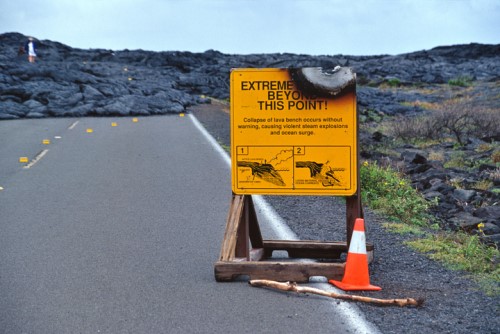

Wherever and whenever volcanic eruptions occur, they have the power to disrupt the lives of residents and the economic cycles of businesses. In 2010, eruptions in Iceland led to a volcanic plume of ash that carried over into Europe and forced many airlines to ground their planes for a week. According to the BBC, the International Air Transport Association estimated that airlines lost £130 million (approximately US$175 million in 2010) each day.
With the most recent eruption in Hawaii, which resulted in its first known injury a few weeks ago, it’s too soon to tell what the extent of losses will be, though thousands of people have been evacuated so far and there are reports of damage to many homes.
Trying to estimate when future volcanic events will happen and what their reach will be can also be challenging. While there are probabilistic catastrophe models available for risks that you can count on each year, like floods, earthquakes or hurricanes, volcanic activity doesn’t occur as frequently, which makes an underwriter’s job more difficult.
“When you look at something like a volcano, they’re so few and far between that the lack of frequency of it makes it hard for an underwriter to get their mind around whether it’s a peril they should be worried about [and] how to even charge for it,” said Michael J. Pilla, president and CEO of the MGU Technical Risk Underwriters that falls under the Ryan Specialty Group umbrella. “[Major] earthquakes are every 30 or 40 years, and I think volcanoes are even more spread out than that, so it’s just not enough data in a legitimate data-driven underwriting modeling.”
For insurance professionals selling to Hawaiians, the coverages vary from policy to policy. In some cases, volcanic eruption, action or forces are mentioned under earth movement or earthquake in a form, though it can depend on what specific ‘forces’ caused the damage.
“If something is destroyed by lava, it could be covered or not, depending on if lava is included in the definition,” said Pilla. “Damage from that ash – right now all that ash is coming out – that would be covered also under the All Other Perils section of a typical ‘all risk coverage’ policy, regardless of whether or not you had quake.” Coverage for removal of the ash depends upon the coverage purchased.
According to Pilla, “Like a lot of insurance, it’s just not really cut and dry.”
The Technical Risk Underwriters team does cat underwriting for projects in Hawaii, particularly for builder’s risk insurance when structures are under construction. Pilla tells Insurance Business they look at where the volcanos are located and determine if the building is in an area that, for example, has the potential to be in the path of lava flow. Business interruption is another area of concern for commercial entities in the state, which could face shutdowns during especially bad eruptions.
Yet, the main challenge with insuring against volcanic risk is often the lack of activity.
“There’s a higher probability of things like flood or even wind storms, which happen every five to 10 years,” said Pilla. “The biggest problem from an underwriter’s standpoint around things like volcanic action, or even earthquake movement, is just the infrequency of events.”
Mike Pilla formed Technical Risk Underwriters (TRU) in 2010. Pilla has over 38 years of experience in underwriting complex construction and marine lines of business. Prior to joining TRU, Pilla worked in the carrier side of the business for 30 years in senior management positions at both GRE and Liberty International Underwriters. His track record on the MGU side includes developing large underwriting authority grants for companies such as Munich Re, QBE Insurance Company, Lloyd's of London, AIG, and Zurich.
